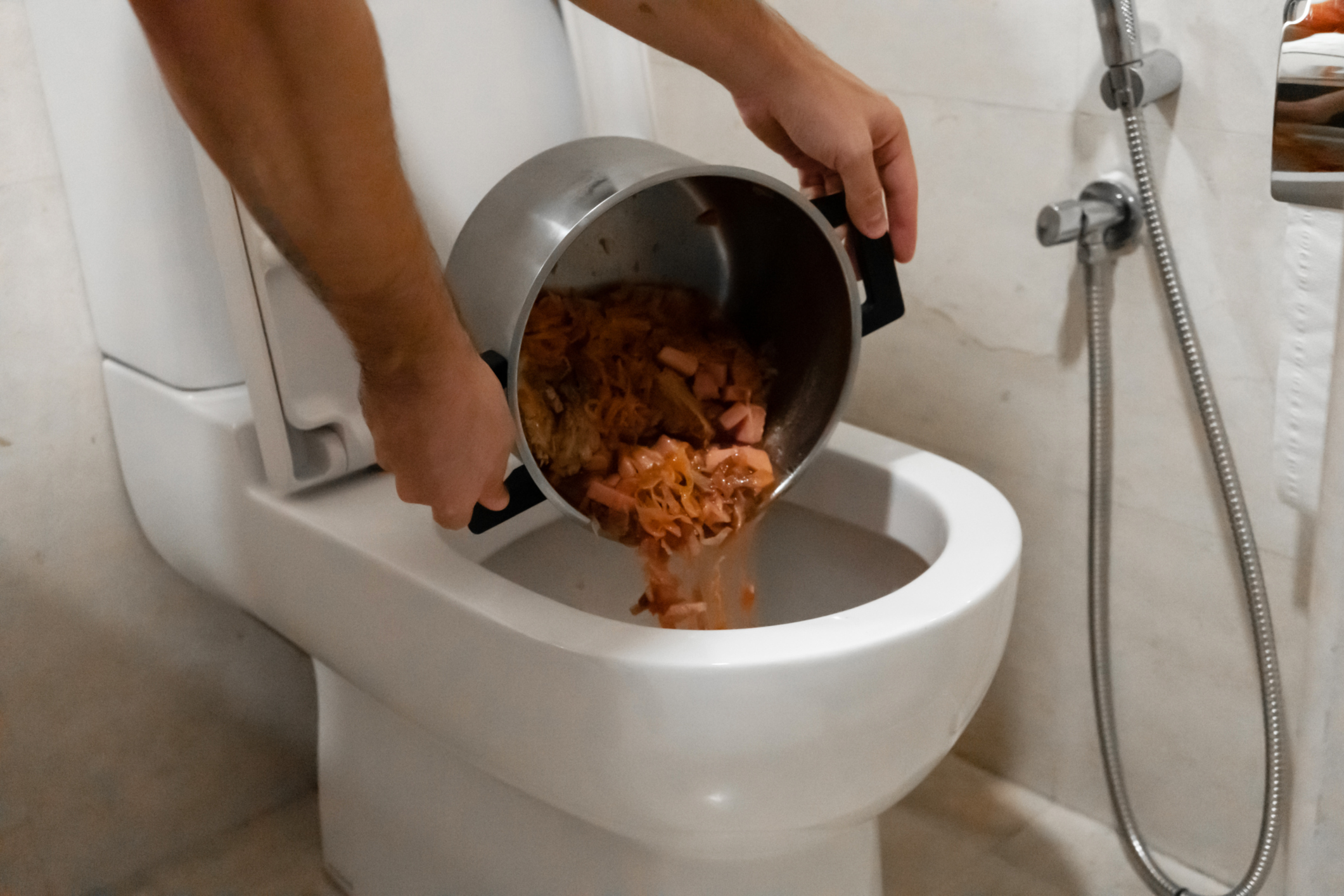Is it Common to Flush Food in the Toilet?
Is it Common to Flush Food in the Toilet?
Blog Article
On this page underneath you can get additional good quality resources in regards to Flushing Food Down the Toilet?.

Intro
Many individuals are commonly faced with the dilemma of what to do with food waste, particularly when it comes to leftovers or scraps. One common inquiry that develops is whether it's alright to flush food down the toilet. In this write-up, we'll look into the reasons why individuals could think about flushing food, the effects of doing so, and different approaches for appropriate disposal.
Reasons why individuals may consider purging food
Absence of understanding
Some people may not recognize the prospective injury triggered by flushing food down the bathroom. They may wrongly think that it's a harmless technique.
Convenience
Purging food down the bathroom might seem like a fast and easy option to disposing of unwanted scraps, particularly when there's no neighboring trash bin readily available.
Laziness
Sometimes, people might simply select to flush food out of large negligence, without considering the consequences of their activities.
Consequences of flushing food down the commode
Ecological influence
Food waste that winds up in rivers can contribute to contamination and injury marine ecological communities. Furthermore, the water used to purge food can strain water resources.
Plumbing issues
Purging food can result in clogged pipelines and drains pipes, causing expensive pipes fixings and aggravations.
Sorts of food that must not be flushed
Fibrous foods
Foods with fibrous textures such as celery or corn husks can get entangled in pipes and create blockages.
Starchy foods
Starchy foods like pasta and rice can soak up water and swell, leading to obstructions in pipelines.
Oils and fats
Greasy foods like bacon or cooking oils must never ever be flushed down the bathroom as they can strengthen and cause obstructions.
Correct disposal approaches for food waste
Using a garbage disposal
For homes outfitted with garbage disposals, food scraps can be ground up and purged via the pipes system. Nonetheless, not all foods are suitable for disposal in this manner.
Recycling
Specific food packaging materials can be recycled, minimizing waste and decreasing ecological effect.
Composting
Composting is a green way to throw away food waste. Organic materials can be composted and utilized to enrich soil for horticulture.
The value of appropriate waste management
Lowering ecological damage
Correct waste monitoring methods, such as composting and recycling, aid reduce pollution and maintain natural resources for future generations.
Securing plumbing systems
By staying clear of the method of flushing food down the commode, house owners can prevent expensive pipes repair services and maintain the honesty of their plumbing systems.
Final thought
Finally, while it may be appealing to flush food down the toilet for comfort, it's important to comprehend the possible effects of this action. By taking on correct waste monitoring practices and disposing of food waste sensibly, people can add to healthier plumbing systems and a cleaner environment for all.
THINK TWICE BEFORE FLUSHING FOOD DOWN YOUR TOILET IN FALLBROOK CA
Let’s be honest, we’re really supposed to be tossing rotten or leftover food in the compost bin or trash can. But many people like to place scraps of food down the drain of, say, their kitchen sink. That’s why the garbage disposal was invented: so we can continue to place certain foods down the drain without clogging our drain in the process. Smart.
But not all of us have the luxury of having a garbage disposal installed. So, you might continue to shove food down your sink drain anyway – or worse: you might flush them down your toilet! If you’re guilty of doing the latter, you’re going to want to stop, and here’s why:
Toilet Drains Aren’t Designed to Handle Food!
There’s your answer: food just doesn’t belong in your toilet. It may seem like your toilet drain is wider than the drains of your sinks, but truth be told, that isn’t actually the case. The narrower pipes of your toilet leave your plumbing at risk for clogging if you do happen to flush your food. In addition, food doesn’t break down as quickly that toilet paper and human waste do. In turn, this leaves your toilet at risk for a nasty clog.
Although a flush of a tiny pinch of food every now and then isn’t going to completely damage your toilet, there are certain foods that should absolutely not be flushed in your toilet at all. These include starchy foods like mashed potatoes, grains, hard pieces of food that are slow to break down, and fats and oils.
The latter categories of food are particularly problematic as they may harden, expand as they absorb water, break down slowly in your system, or generally create the perfect obstruction with their gelatinous composition. These are all things you don’t want in your plumbing system!
Experiencing a Toilet Clog?
Nobody’s perfect, and we all make mistakes. Sometimes one of the mistakes people make is flushing food down their toilet and later realizing that it wasn’t the best thing to do once they see that their toilet is now clogged. Uh-oh!

I recently found that page on Think Twice Before Flushing Food Down Your Toilet when doing a search on the internet. Liked our review? Please share it. Let other people check it out. We love your readership.
Book A Free Estimate Report this page